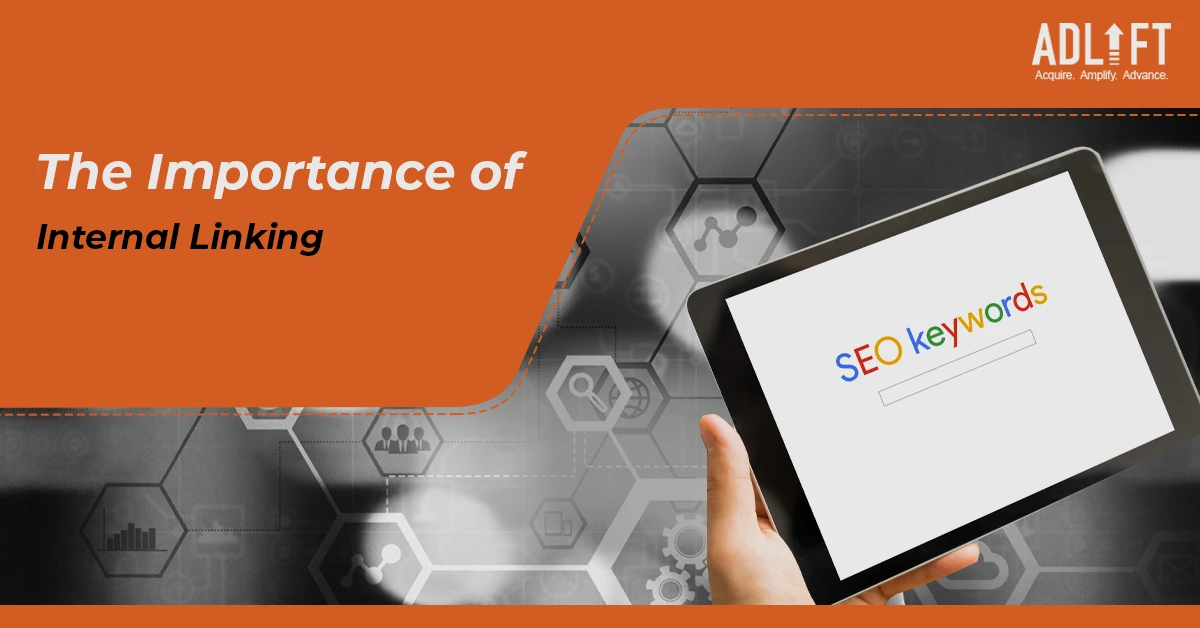The Importance of Internal Linking for Your Blog’s SEO Strategy

Internal linking is an essential part of an effective blog SEO strategy. It involves linking pages on the same website domain. Internal linking aids search engine crawlers in understanding your website’s structure and helps users navigate your content more efficiently. This improves the user experience and reduces bounce rates. Internal linking also helps distribute ranking power across all pages by linking relevant pages with high authority. By following best practices for internal linking, you can enhance your blog’s SEO visibility and effectiveness.
Why is internal linking important?
Internal linking helps search engine crawlers understand the structure of your website and how different pages are related to each other. It also helps to distribute the page authority and ranking power throughout your website.
Improves User Experience
Internal linking provides users with a better browsing experience by guiding them through your website and helping them find the content they are looking for. It keeps them engaged and helps reduce bounce rates, which ultimately improves your website’s user experience.
Enhances Crawling and Indexing
Internal linking makes it easier for search engine crawlers to discover and index your website’s pages. When a crawler arrives at a page, it follows the internal links to other pages on your website. This helps in better understanding your website’s structure and improves your website’s crawling and indexing.
Distributes Link Equity
Internal linking helps distribute link equity, which is the ranking power that a page passes to another through a hyperlink. It helps distribute link equity from high authority pages to other pages on your website, which ultimately boosts the ranking of those pages.
How to implement internal linking on your blog
There are several best practices to follow when implementing internal linking on your blog.
Establish a Hierarchy
Create a clear hierarchy of your website’s pages and organize them in a logical manner. Start with the homepage, followed by the main categories and subcategories, and finally the individual pages.
Use Relevant Anchor Text
Use descriptive and relevant anchor text to link to other pages on your website. The anchor text should be natural and provide users with an idea of what they can expect to find on the linked page.
Link to Relevant Pages
Link to pages that are relevant to the content on the current page. This helps users find more information on the topic they are interested in and improves your website’s user experience.
Use Different Types of Links
Use different types of links, such as contextual links within the content, navigation links in the header and footer, and related post links at the end of a blog post. This helps distribute link equity throughout your website and improves your website’s usability.
The Bottom Line:
Internal linking is an essential part of any SEO strategy for a blog. It helps search engines understand the structure of your website, improves user experience, enhances crawling and indexing, and distributes link equity throughout your website. By following the best practices mentioned above, you can improve your website’s internal linking and ultimately boost your website’s SEO.
FAQs
Interlinking in simple language is adding the links of the same web domain on its different pages. It helps crawlers easily navigate the website and index pages of the same category into one section. Besides, it also boosts website domain authority and page authority.
Interlinking allows crawlers to acknowledge the related web pages of the same domain. This also helps to drive the crawlers on every page while visiting even anyone. As a result, it allows them to index and rank them better.
Connecting pages of the same web domain helps build link juice flow. It is such that the page with higher page authority distributes its credibility amongst the linked ones. Other pages also gain credibility since it makes the site structure more apparent to the crawler.
As we know, interlinking contributes to improving the website structure. It allows users to easel visit related web pages. Thus, making the website easier to navigate and enhancing the user experience.
There are different practices for internal linking. Some of the proven strategies are to link on the rich keyword, use related or relevant links only, avoid using the same anchor for two different links, etc.
The crawlers visit every website page individually to index them according to their categories. Moreover, it even allows the crawlers to rank them accordingly. Linking the pages of the same web domain provides an easy-to-navigate site structure. As a result, it will enable them to visit the website’s each page without missing any.
Internal linking is a smart SEO practice to improve a buyer’s journey. Precise linking allows to retain the user on the website for a longer time and assures a successful conversion while reducing the bounce rate. Moreover, linking helps in adding related topics to the content to keep the user engaged.
When a user visits one page with related internal links, they tend to visit them. As a result, it helps to collectively increase the page views of all the web pages.
Using the same keyword for anchoring, using irrelevant links, adding too many links on the same page, and using broken links for internal linking. These are a few common mistakes to avoid in internal linking.
While making an effective internal linking strategy, remember the following things:
- The link should not be broken.
- Avoid using the same keyword for anchoring links with different information.
- Add only a limited number of links.
- Keep auditing your content and the links on a routine basis.
Categories
- AI
- ChatGPT
- Content Marketing
- Content Marketing & Strategy
- Digital Marketing
- Entrepreneurship
- Google Analytics
- Google Tag Manager
- Google Updates
- Influencer Marketing
- Mobile App Marketing
- Paid Marketing
- Press
- Pubcon
- Search Engine Marketing
- Search Engine Optimization
- SEO
- SEO Tools
- Social Media Marketing
Recent Posts
- How do I Verify My Business on Google to Ace Local SEO? March 17, 2025
- The Pros and Cons of Pay For Performance SEO March 17, 2025
- Website Structure for SEO: A Blueprint for Better Rankings March 17, 2025
- Keyword Cannibalization: Why It Matters for Your Company and How to Avoid It March 12, 2025
- SEO for Bing: Unlocking Opportunities for Business Owners and Marketers March 11, 2025
- Google Cached Websites: A Quick Guide to Accessing Them March 5, 2025
- Programmatic Advertising: Stop Just Talking About It, and Start Driving Real Growth (A Business Leader’s Guide to Cutting Through the Hype) March 4, 2025
- How to Use Google Trends: The Ultimate Guide for SEO & Content Marketers March 4, 2025
- Farewell, Skype: It’s the End of an Era March 3, 2025
- How to Plan and Execute a Website Migration Without Losing Rankings? February 28, 2025
Get
in Touch
Contact AdLift for a 360-degree marketing plan

